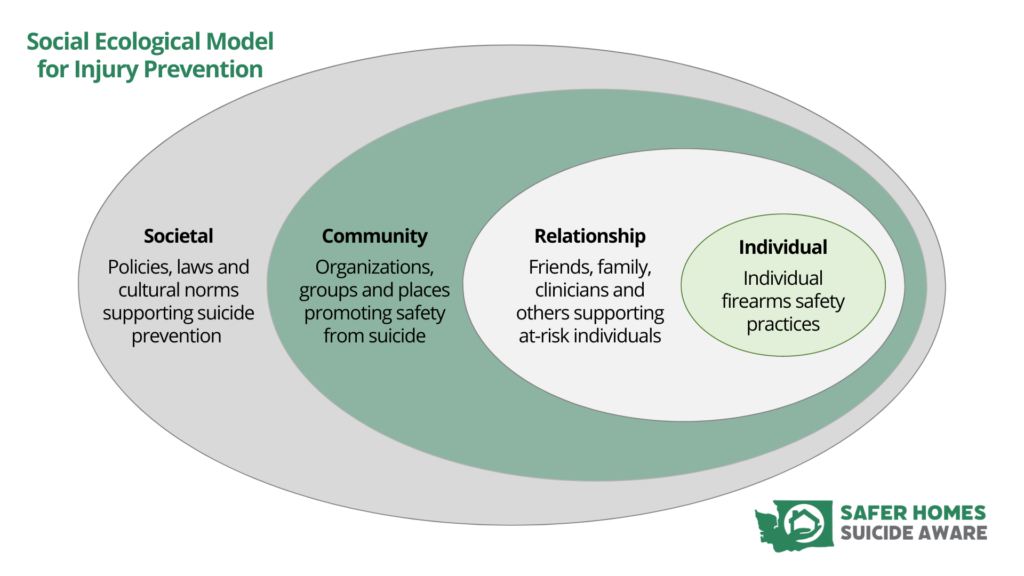The Social Ecological Model: Four Levels to Create Change
Suicide risk involves complex interactions of risk and protective factors that extend beyond people as individuals. As recommended by the National Strategy for Suicide Prevention and the Centers for Disease Control, we use the social ecological model as a practical framework to organize the broad range of factors influencing suicide risk and strategies used for prevention. The model proposes that at-risk individuals have relationships with people and connections with communities that all exist within a larger society. Effective prevention includes strategies to address risk and protective factors across all of these levels – individual, relationship, community, and societal.
Explore the information below to learn more about the strategies we use at each level of prevention.

Individual
Our individual-level work encourages people to take responsibility for their safety by taking action on how they use firearms and medications.
- SAFER Brief Intervention at gun shows, firearms retailers and other events
- Safer Homes, Suicide Aware: Firearms Safety Webinars
- Informational materials: poster, stickers, postcard
Relationship
Our relationship-level work empowers families, friends, clinicians and others to support people at risk for suicide.
- Targeted Interventions: Firearms Culture and Clinical Care online training
- Forefront Suicide Prevention LEARN® Training for Veterans and their Caregivers, Pharmacy Professionals, and Healthcare Providers, online and in-person trainings
Community
Our community-level work engages organizations relevant to firearms and prescription medications to promote safety from suicide.
- Benefit package for federal firearms licenses with storefronts: policy/procedures checklist, curricula, collateral materials, training
- Washington Department of Fish and Wildlife: Firearms Safety, Suicide Awareness, the Law and You publication
Societal
Our societal-level work advocates for laws, policies, and cultural norms that support suicide prevention.
- Universal background check exceptions for temporary firearms transfers intended to prevent suicide.
- Liability protection for organizations willing to store firearms temporarily.
Multi-Level Protection
Effective suicide prevention includes strategies at all levels of the social ecological model working together to support people at risk for suicide. We have used this model to guide the use of our SAFER intervention.
At the individual level, we share information and provide firearm locking devices to people who own and use firearms.
At the relationship level, we discuss with participants how they can support a friend, family member or other individual who experiences an increase in suicide risk.
At the community level, we provide our intervention at gun shows, gun shops and community events so that organizations and groups can support a message of firearms safety for suicide prevention.
At the societal level, we have participated in legislative processes to address legal barriers to temporary firearm transfers when people are at increased risk for suicide.
